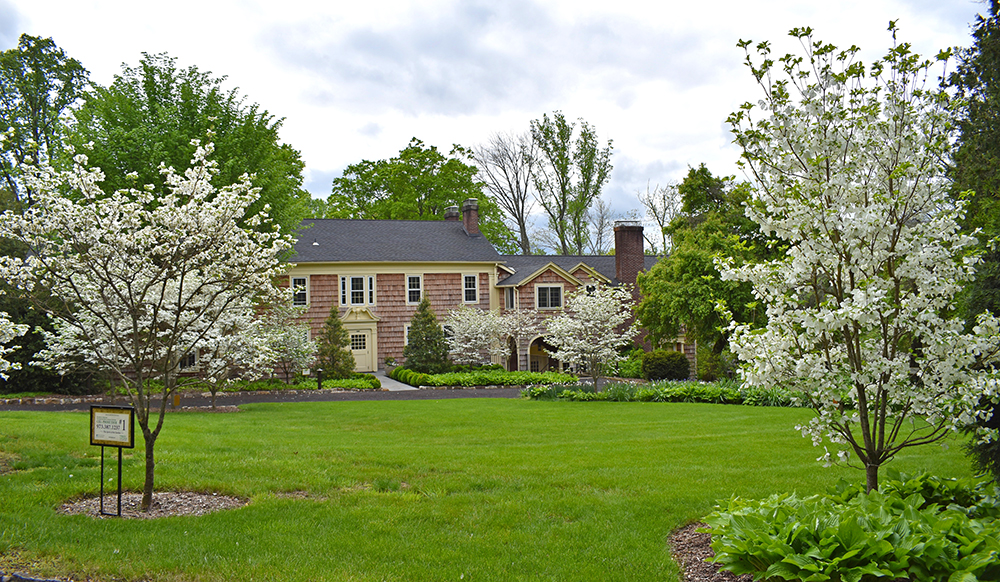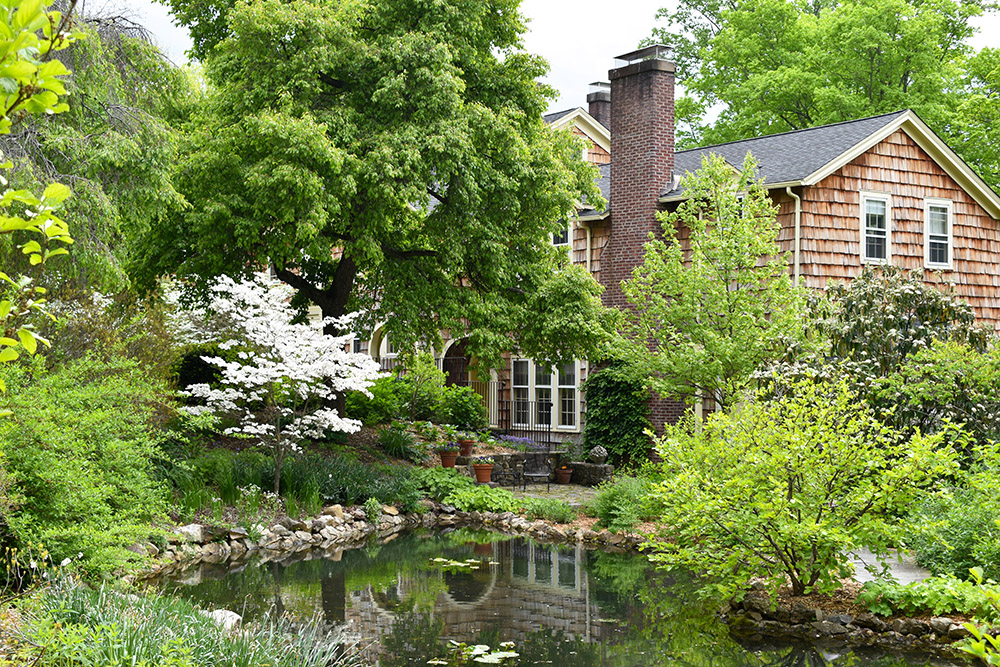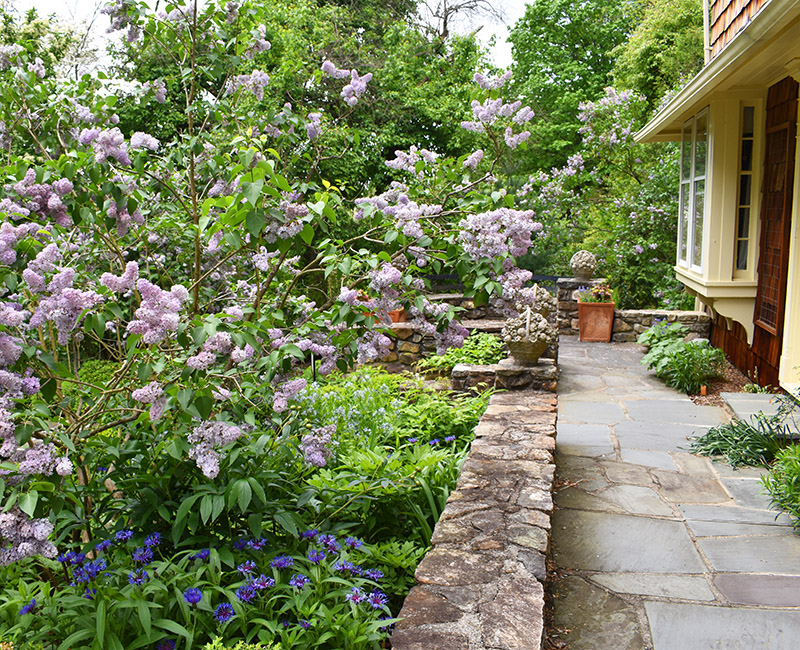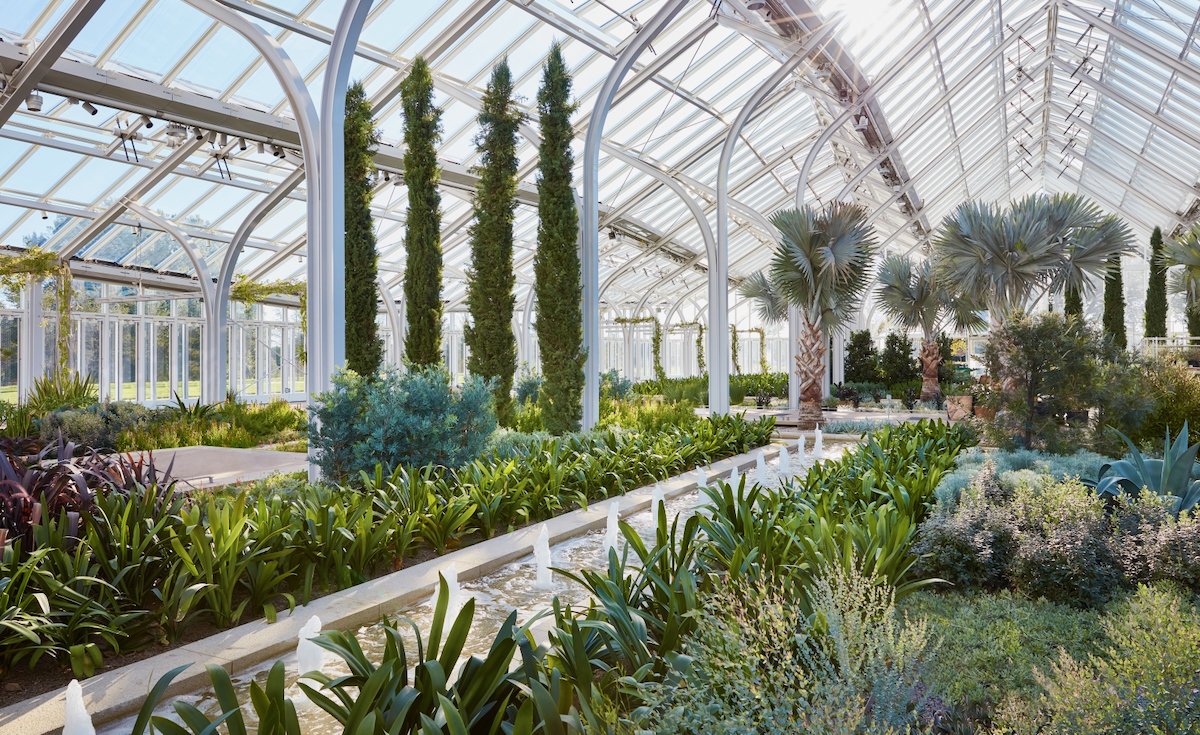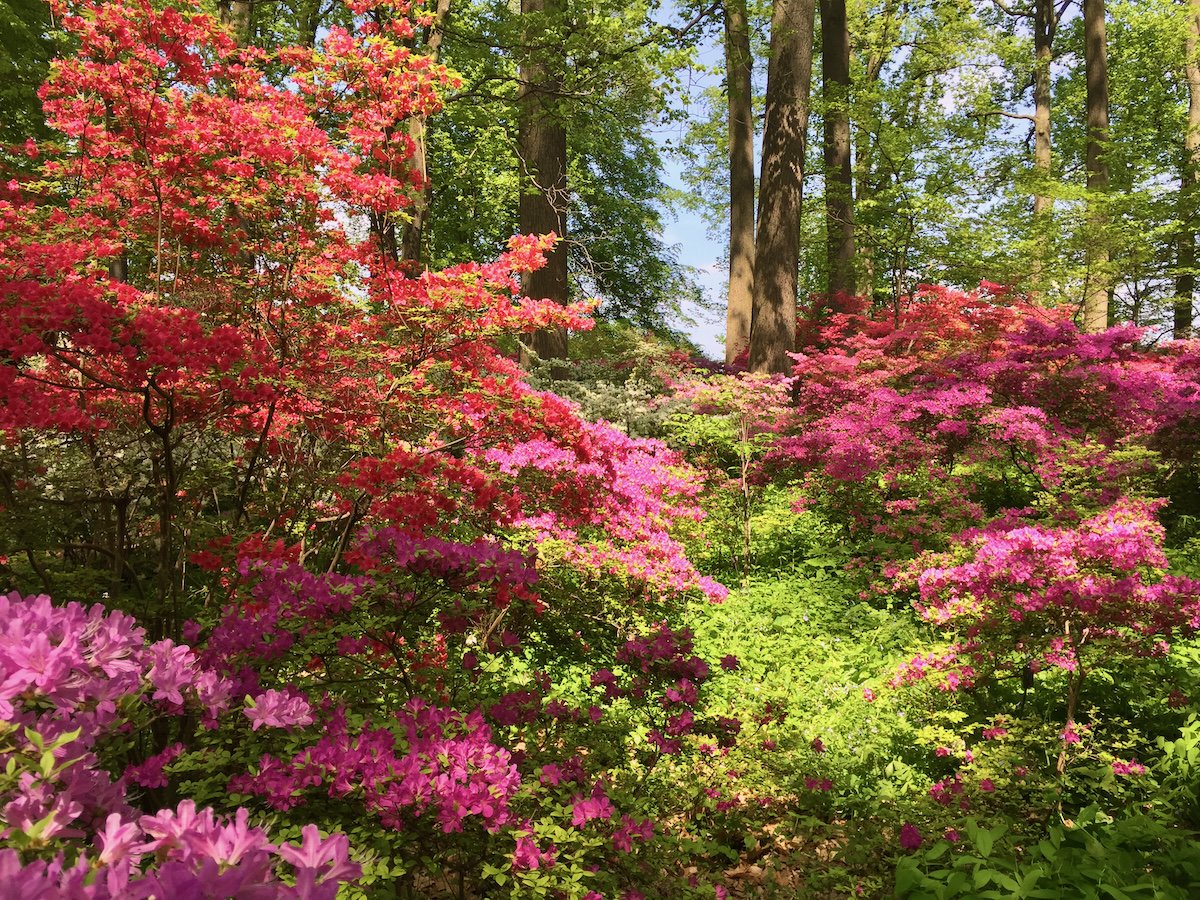Bamboo Brook—a Beaux Arts Beauty
/Women landscape designers were a rarity in the early 1900s when Martha Brookes Hutcheson began her practice. I was fortunate to visit the Bamboo Brook Outdoor Education Center in Far Hills, New Jersey, which had once been known as Merchiston Farm—the home of Hutcheson and her husband from 1911 to 1959. Built in the late 18th century, the house was enlarged and remodeled by the Huchesons in 1927.
Hutcheson was one of America’s first female landscape architects and attended the School of Architecture and Planning at the Massachusetts Institute of Technology, along with Marion Coffin and Beatrix Farrand. She created landscape plans for dozens of estates in Massachusetts and Long Island. Hutcheson’s design for Merchiston Farm was completed shortly after the publication of her book The Spirit of the Garden, in 1923.
Native white dogwood underplanted with green hostas and white daffodils in early May
Hutcheson’s European travels inspired her to design her own garden in the Beaux-Arts style popular in the early 20thcentury. Drawing on European Renaissance and Baroque gardens as well as those of Islamic-era Spain, Beaux-Art gardens used formal geometry, allées and hedges, long vistas, reflecting pools and fountains, and native plants and materials. You see these design principles immediately at Bamboo Brook when you come upon the circular drive at the front of the house, punctuated with white dogwoods underplanted with green hostas. Hutcheson used a restrained color palette of greens, blues and whites, and repeated the circle motif throughout her landscape.
Sunken circular patio in front of the house
Circular motif repeated in the architecture, with deutzia and centaurea montana
The path from the driveway leads to the Upper Water—a pond designed to appear as a naturalized body of water. The pond has a practical use as well as an aesthetic one. It collects rain water runoff from the upper part of the property. It was placed to take advantage of both the topography and the architecture of the house, and, importantly, it reflects the plants, the house, and the sky. A winding stream leads from the Upper Water to the rest of the garden. Hutcheson was fascinated with water features and constructed an intricate system of cisterns, pipes, swales, and catch basins to supply her house, pools, and gardens with collected rainwater.
Upper Water: a pond created to collect rainwater runoff and reflect the sky and plantings
Brook connecting the Upper Water to the circular pond
When Hutcheson bought the house, she remodeled it and changed the front entrance to what was originally the back of the house. In the new back yard, the East Lawn and Coffee Terrace were designed with formal axial geometry. Informal plantings circle the oval East Lawn, which connects to the Circular Pool—a slightly sunken reflecting pool with six paths radiating from it and plantings of iris, phlox, ferns, dogwoods, and vinca. The Circular Pool was originally a farm pond in a natural hollow, which provided water for livestock.
Coffee Terrace with lilacs and centaurea Montana
Garden in back of the house with amsonia, lilacs, boxwood
Amsonia and boxwood create quiet beauty
the Circular reflecting pool was used by the family as a swimming pool. it is 5’ deep and lined with native stone.
Beyond the lawn lies an axial garden with a white cedar allée and parterres adjacent to a tennis court and the children’s playhouse. Hutcheson placed rustic wood benches and chairs at spots where views could be enjoyed. She was a big proponent of native plants, and adapted species such as dogwood, lilac, sweet pepperbush, and elderberry to an Italian Renaissance-inspired design, and used native stone to create walls, patios, and steps throughout the garden.
this garden connects the circular pool to the east lawn and coffee terrace.
A semi-circular stone bench is built into the stone wall and repeats the circle motif.
The Little House was Hutcheson’s quiet getaway. It was built over a small stream, which Hutcheson embellished with spillways and a lily pool, providing a home for water lovers such as sweetfern and iris.
Little House built over a small stream
Geranium, phlox and ferns
A straight road lined with elms and oaks extends from the house to a farm complex including a barn, garage, farmhouse, and various work yards set in an informal landscape of fields and woods.
Buckeye in back garden
In 1972 Hutcheson’s heirs gave the property to the Morris County Parks Commission, and it has been restored to its 1945 appearance. In addition to the formal areas, there are numerous trails that wind through the fields and along Bamboo Brook, and connect to the Elizabeth D. Kay Environmental Center and Willowwood Arboretum. A self-guided cell phone tour provides valuable information. Bamboo Brook is located at 11 Longview Rd., Far Hills, NJ. It is open daily from 8 am to sunset.
For more gardens in New Jersey, see The Garden Tourist: 120 Destination Gardens & Nurseries in the Northeast.
You Might Also Like


